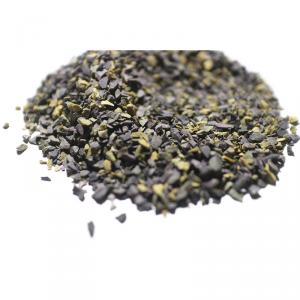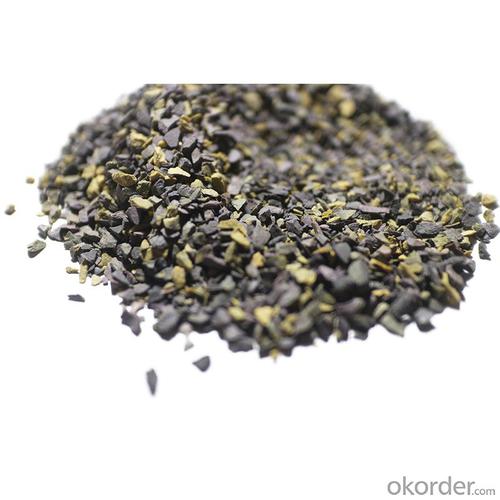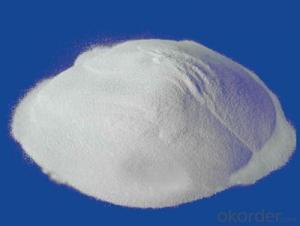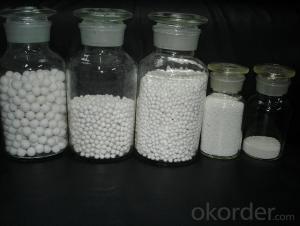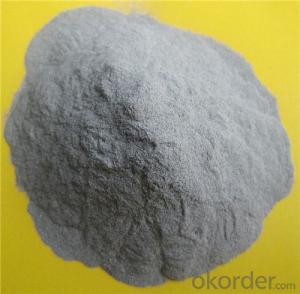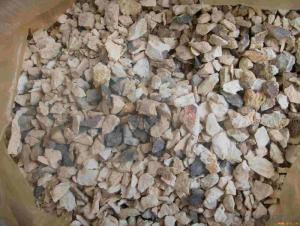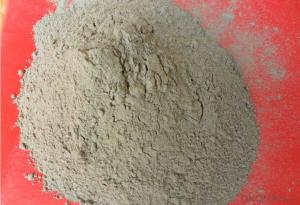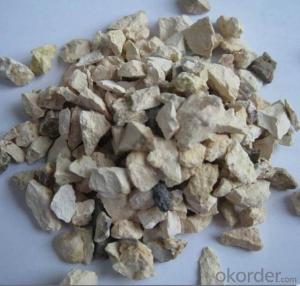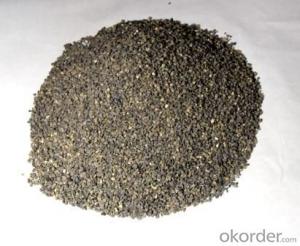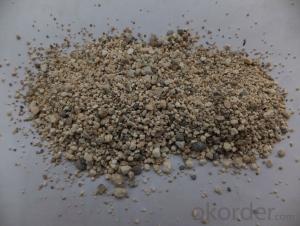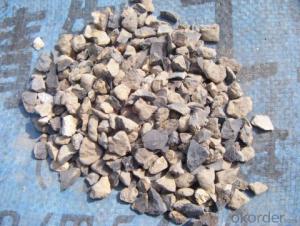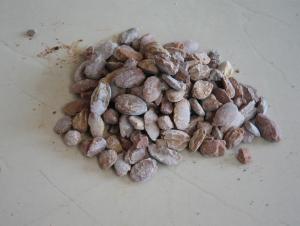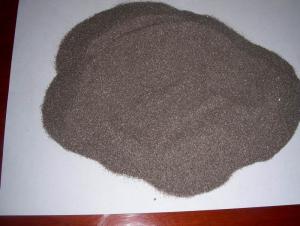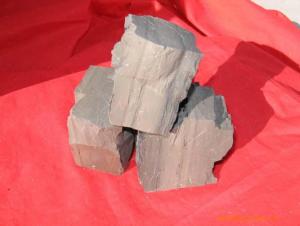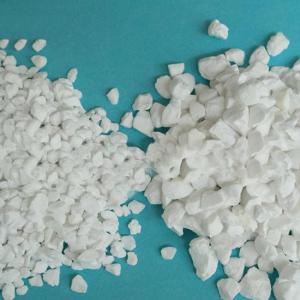Raw Materials for Refractory:Calcined Bauxite 78 Grade Size 1-3 mm and 3-5 mm
- Loading Port:
- Tianjin
- Payment Terms:
- TT or LC
- Min Order Qty:
- 20 m.t.
- Supply Capability:
- 1000 m.t./month
OKorder Service Pledge
OKorder Financial Service
You Might Also Like
Quick Details
· Place of Origin: Shaanxi, China
· Shape:particle or powder
· Material:Alumina
· SiO2 Content (%): 16max
· Al2O3 Content (%):78min
· Fe2O3Content (%):2.3max
· Model Number:Customer's Requirement
· Brand Name:CMAX
· Application:Metallurgy or Refractory
· Product name:Bauxite/Alumina fines/boksit/raw bauxite fire cement/200mesh bauxite powder
· Color:Black/gray
· Size:100MESH/200MESH/0-1MM/1-3MM/3-5MM/0-40MM
· BULK DENSITY:2.85G/CM3
· Certificate:ISO9001
· Usage:Fire Resistance Place
· Type:Raw Refractory
· shape:particle or powder or clinker
· Packaging Details:Bags/In bulk/As costomer's requirement'
Quality assurance:
1.On a regular basis or as per your request,we entrust national testing agencies to conduct quality inspections
2. Strictly in accordance with the ISO9001-2008 international quality system standard,we monitor and manage the whole process throughout production,quality testing,and measurement to ensure product quality
FAQ:
Q: What kind of payments does your support?
A: T/T, L/C, Cash are accepted.
Q: Do you charge for the samples?
A: Accordeing to our company policy, the samples are free, we only charge the freight fee. And we will return the freight fee during the next order.
Q: Can you produce according to customers' design?
A: Sure, we are professional manufacturer.
Q: Do you have other products?
A: Yes, please check the pictures:
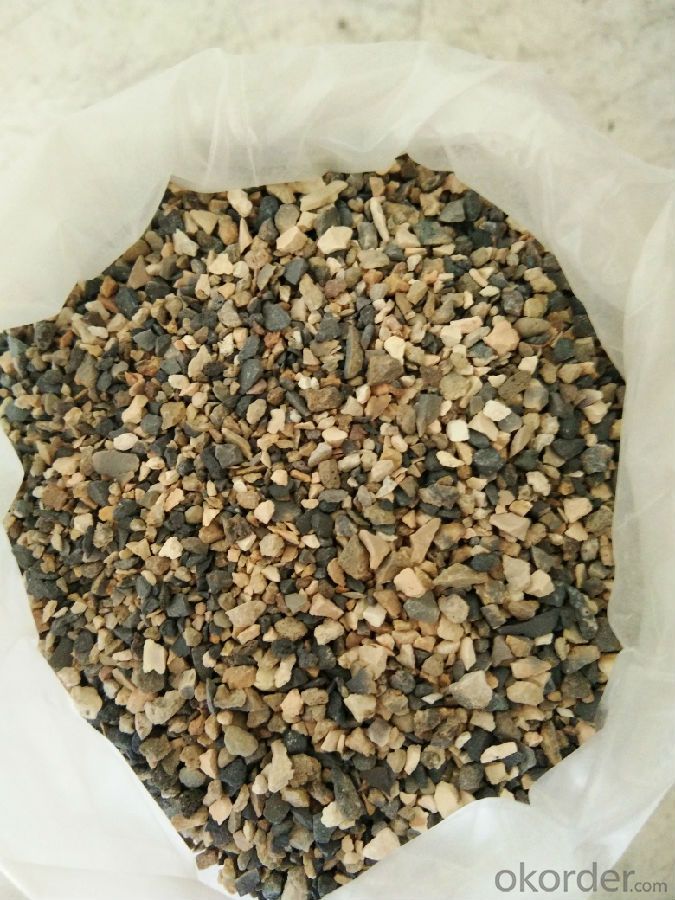
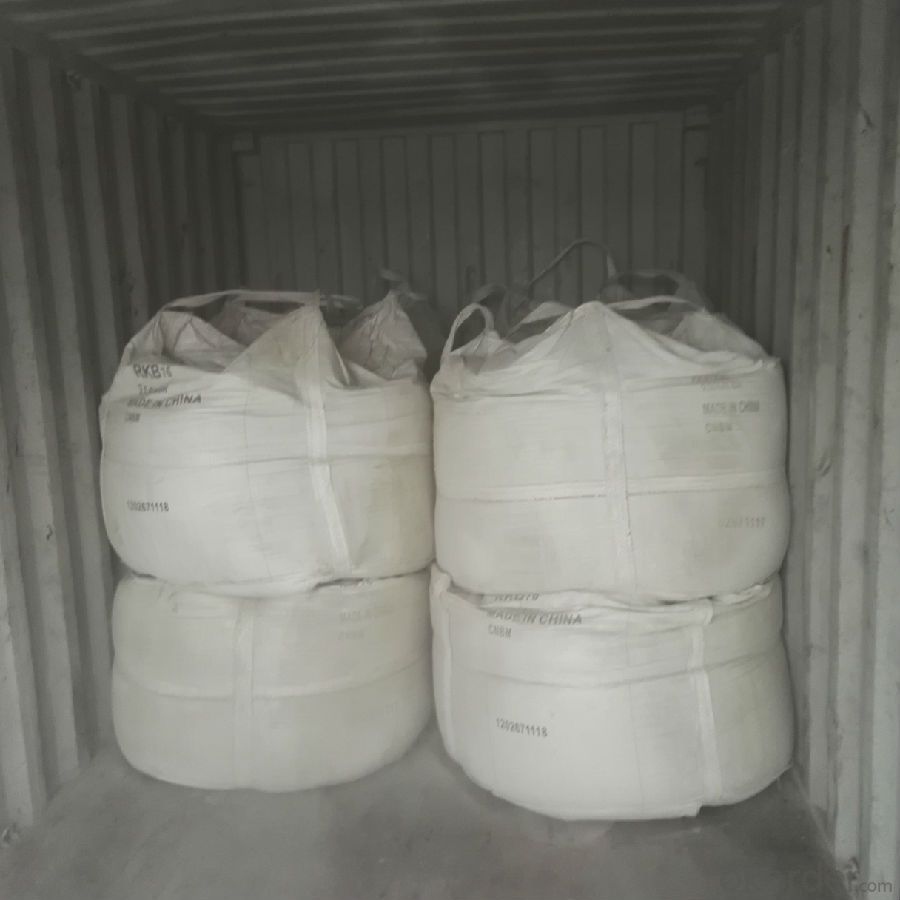
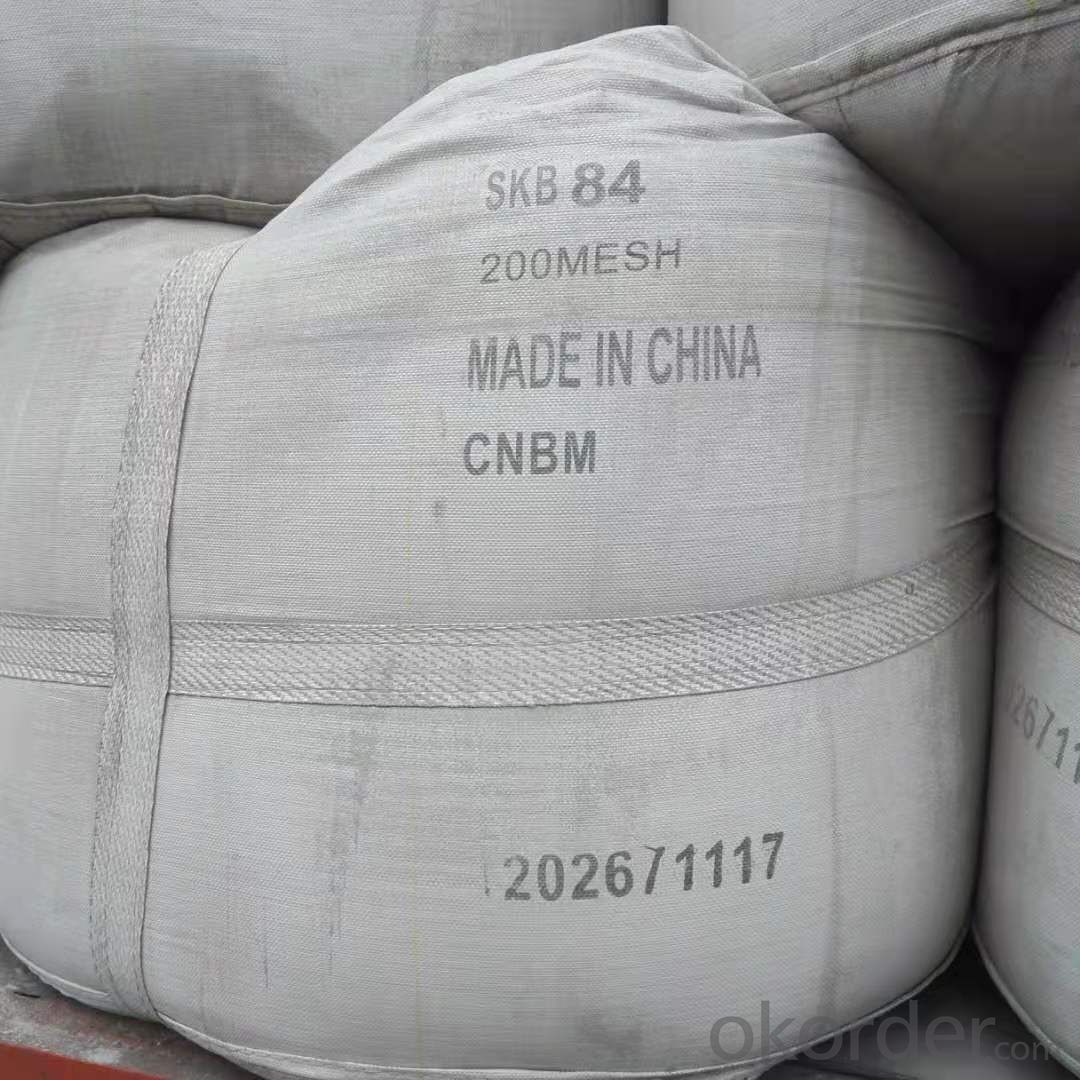
- Q: What are the materials of insulation firebricks?
- The furnaces of firebricks are generally divided into two types, namely, unshaped refractory materials and shaped refractory materials. Unshaped refractory materials, also called castables, is a mix of powdery particles of many aggregates and one or multiple adhesives. They must be stirred well with one or multiple liquids when in use, which has a strong liquidity. Unshaped refractory materials generally refers to firebricks. They have standard rules about their shapes and can also be processed temporarily as needed.
- Q: What are the electrical fire protection materials?
- Flame retardant organic resin: They can be classied into PVC, vinyl chloride, chlorinated rubber, epoxy resin emulsion, epoxy resin, phenolic resin, etc.. Fire retardant additive: Phosphorus and halogens, nitrogen organic compounds (chlorinated paraffin, tributyl phosphate (TBP) and polybrominated diphenyl ethers) and boron (boric acid, zinc borate, boric acid aluminum), antimony, aluminum, zirconium inorganic compounds.
- Q: How about the prospect of refractory material?
- Area depends the market. Resource-based industry
- Q: Which brand of thermal insulating refractory is good?
- The most famous is the dragon, Morgan, Luyang, which are good at making ordinary thermal insulation materials and whose products are cheap but quality. Refractories are non-metallic materials with good resistance against thermal shock and chemical erosion, low heat conductivity coefficient and expansion coefficient. It requires high temperature resistance in nature. It is difficult to transport suc materials in silicious thermal insulation board production base. Silicious thermal insulation board is a kind of thermal insulation material during casting process. Raw materials are non-porous refractory?aggregate, porous refractory?aggregate, organic fiber and inorganic fiber.
- Q: In entering fire door, which material does well?
- Entering door has two kinds: security doors, fire security door. The pure fire door does not have anti-theft function. In the relevant technical standards of fire doors : when in the fire, it can make residents in a few seconds or 1 minutes forget to open the door... The material of fire door, fire door has steel fire door and wooden fire door. There is no doubt that wooden fire door can't be used as entering door. In the steel fire door, two layers of steel plate in the clip is flame retardant material.
- Q: Who knows how to divide the building fire grade and fire resistance grade?
- I hope to help you building fireproof rank division is one of the most basic measure in building fire safety technical measures, Building's fireproof rank is divided into class one, two, three, four according to China's architectural design specification. Fire-resistant capability of the highest level is the strongest; Fire resistance of four level of the weakest. The fire resistance level of a building depends on the combustion performance and fire resistance of the building components that comprise the building. The so-called building component refers to a series of basic components, such as wall, foundation, beam, column, floor, stair, ceiling and so on. The judgment condition of the fire resistance There are three conditions for components' fire resistance limit to be reached, namely, the fire resistance limit of the building component: Loss of support and integrity; loss of time to fire the role of the time; as long as any of these three conditions is met, it will reach its limit of fire. Hope my answer will help you.
- Q: How many refractories are there for boiler above 1200 ℃?
- In addition to refractory brick, refractories include refractory concrete (refractory cement+aggregate), fire-resistant insulating layer (refractory cement+vermiculite powder or refractory cement + diatomaceous earth) and the like. Refractories often used are azs brick, corundum brick, direct-bonded?magnesia-chrome?bricks, carborundum brick, silicon nitride bonded silicon carbide brick, nitride, silicide, sulfide, boride, carbide and other nonoxide refractory materials, calcium oxide, chromium hemitrioxide, aluminium oxide, beryllia and other refractories. Thermal insulation refractory materials often used are diatomite product, asbestos product, insulation?board,etc. Unshaped refractories often used are repairing?mass, ramming?mass, castable refractory, plastic refractory, refractory mortar, refractory gunning mix, sling refractory, refractory coating, lightweight refractory?castables, stemming, etc.
- Q: The principle of choosing fire-resistant material in Thermal Energy and Power Engineering equipment.
- What thermal equipment? The most simple principle is durable, low cost and with no environmental pollution.
- Q: Who know about the knowledge of acid refractory material? Please explain in detail.
- Refers to the silicon dioxide
- Q: What are the advantages and disadvantages of new external wall fireproof and thermal inuslation matertials?
- The new external wall fireproof and thermal inuslation matertials have both the advantages and disadvantages. Advantages: 1)Low requirements on the waterproof, weather resistance and other technical indicators. The dry wall and gypsum plastering mortar, etc. can meet the requirements and can be easily obtained; 2) The inner insulation material are separated by the floor, and construct within a height of only a storey , without erecting scaffold ; 3) In the hot summer and cold winter or hot summer and warm winter area, the inner insulation meets the requirements; 4) The glass beads overcome the shortcomings of expanded perlite, like, large amount water absorption, easy powdering, big volumetric shrinkage in the slurry mixing process, easily leading to post-insulation product performance degradation and hollowing, cracking, and also make up for the defects of polystyrene particles organic materials, like, flammable, poor fire performance, producing harmful gas at high temperatures and anti-aging, poor weather resistance, poor workability and large rebound in construction, ect. Disadvantages of external wall insulation : 1) Since the ring beam, slab and column structure would cause thermal bridges, leading a greater heat loss; 2) It is of low intensity, high water absorption, easy to shrink and crack. The insulation system is prone to cracking, leaking or loss and other common quality problems, especially it is easy to crack at the seams, thus being difficult to exsit as long as the building. 3) It is inconvenient for the users to redecorate and hang ornaments; 4) It takes up indoor used space;
Send your message to us
Raw Materials for Refractory:Calcined Bauxite 78 Grade Size 1-3 mm and 3-5 mm
- Loading Port:
- Tianjin
- Payment Terms:
- TT or LC
- Min Order Qty:
- 20 m.t.
- Supply Capability:
- 1000 m.t./month
OKorder Service Pledge
OKorder Financial Service
Similar products
Hot products
Hot Searches
Related keywords
